Today we’d like to talk about Kitakata Ramen Ban Nai, a newly opened Japanese ramen eatery. With over 50 years of history in Japan and 67 locations across its homeland, Ban Nai has finally brought its iconic flavors to Europe, opening its first outpost in Frankfurt in 2025.
Restaurant Profile
🏷️ Name of the Restaurant: Kitakata Ramen Ban Nai (incl. menu)
📍 Adress: Kettenhofweg 53, 60325 Frankfurt am Main
🍜 Style: Japanese Cuisine – Japanese tapas, dumplings, rice dishes, noodle soups, fried chicken etc.
💰 Price: around 20 – 30 EUR per Person (incl. Drinks and Tips)
Leading the menu is their signature shoyu ramen—the most classic ramen style in Japan. Ban Nai stays true to the real taste of Japanese ramen, by importing original soy sauce from Japan, mixing the shoyu tare (base) and pairing it with selected pork bone broth. The result is a richly flavored bowl that some might find too intensive—or even a little gamey—but others adore for its deep, authentic taste.
Alongside the shoyu ramen, Ban Nai offers miso ramen, plus vegetarian options. Ready to dive in? Let’s take a look at some of the highlights.
Karaage – crispy, juicy fried chicken, served in portions of 3 pieces (€5) or 6 pieces (€10)
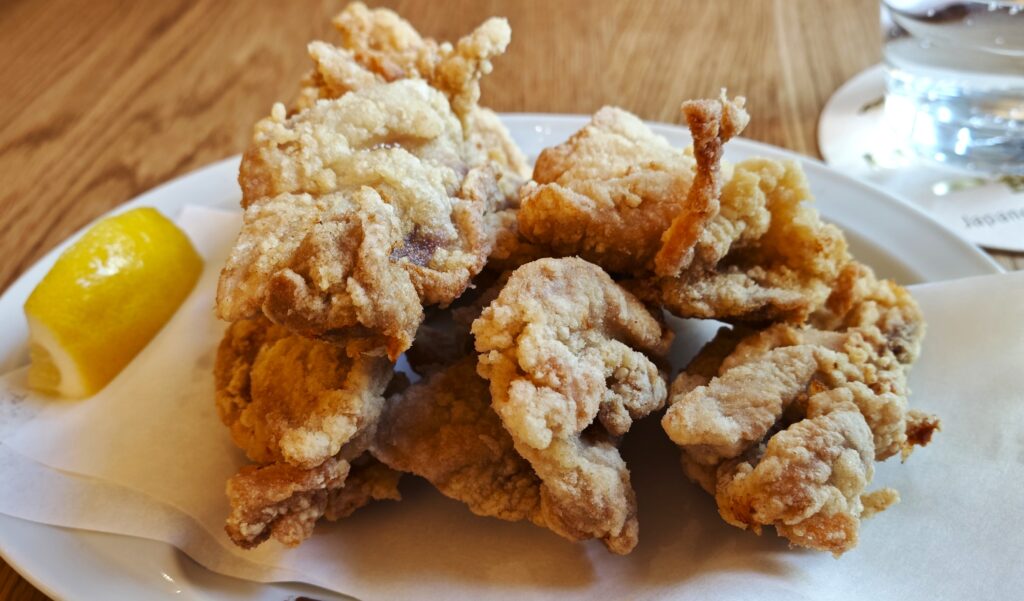

While fried chicken might seem universal, Japanese karaage stands out for its marination—soaked in soy sauce, ginger, and garlic before frying.
Unlike heavier Western-style fried chicken, karaage is lighter, crispier, and juicier.
Each piece gushes with juice and is incredibly moist inside, with a light, crackling-crisp coating that shatters with each bite.
It’s paired with a sesame mayo sauce. Creamy, nutty, and slightly tangy—likely brightened with lime juice—this sauce is a perfect mix of richness and zest.
A sprinkle of savory powdered cheese (Parmigiano) adds a layer of depth and umami.
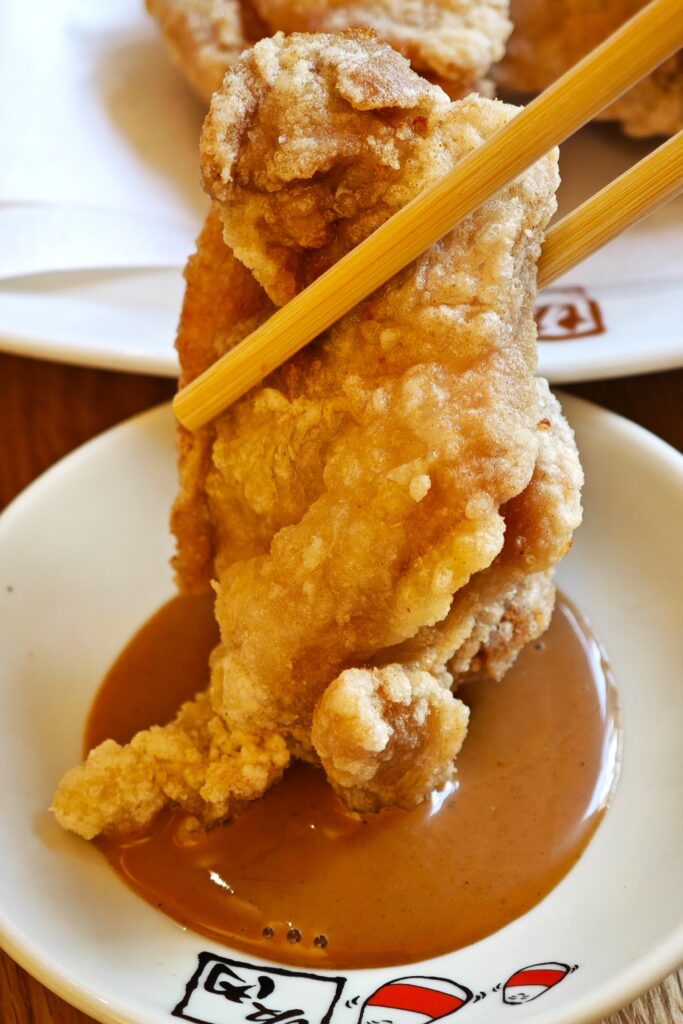
Negi Chashu Ramen – with pork broth, shoyu base, 11 pieces of toro chashu, leek, bamboo shoot, green onion

This hearty, comforting bowl is an “all-included” version, loaded with 11 pieces of toro chashu, and generous toppings of leeks, bamboo shoots, and green onions – an umami bomb packed with smoky-savory depth.

This remen bowl is built on their signature shoyu (soy sauce) and pork bone broth.
The toro chashu – ultra-rich, marbled pork belly – is slow-braised until silky-soft and develops a smoky, salty crust. Its juicy, buttery fat melts into the broth.
The broth starts smooth and soothing, not overly salty. As the chashu fat renders in, the broth grows richer, saltier, and even more porky.
The leeks and green onions add a sharp, fresh bite, while the bamboo shoots bring an earthy crunch – balancing the richness.
The noodles are springy with a nice chew, holding up well in the broth without getting soggy.
If you prefer plant-based, Ban Nai offers a vegetarian version of their shoyu ramen, swapping the pork broth for a vegetable-based broth and replacing the toro chashu with crispy fried tofu.
Now, let’s move on to the miso ramen— a deeply traditional broth. At Ban Nai restaurant, they craft their own original miso blend, by combining four different types of fermented soybean paste (known as miso in Japanese). This rich, complex paste is then whisked into their slow-simmered pork broth, for a creamy, luxuriously thick, umami soup. It’s savory, slightly sweet, and wonderfully robust, with a velvety texture that coats every strand of springy noodle.
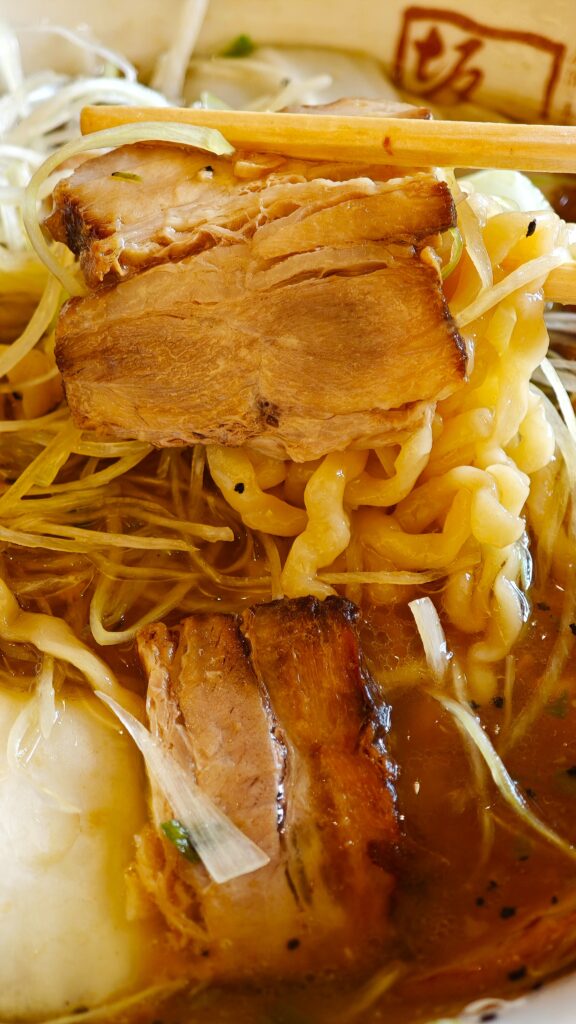
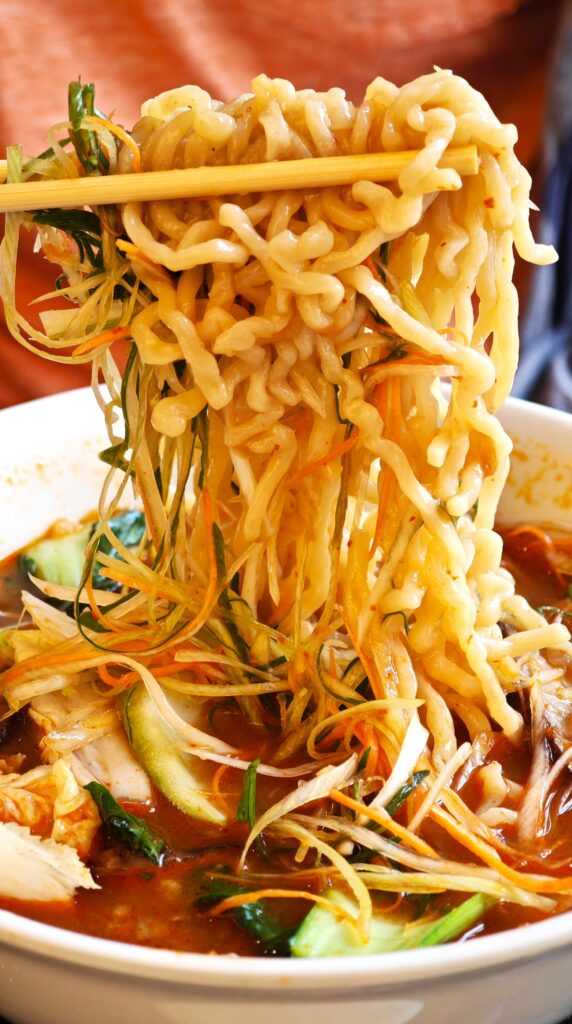
Vegetable Miso Ramen – with pork broth, miso paste, 5 toro chashu pieces, Chinese cabbage, choy leek, carrot, onion, green onion and garlic

Although this might seem like a lighter option, it does pack a serious umami punch. The rich pork foundation adds deep, meaty flavors, rounded out by savory-sweet miso paste.
Floating in this savory soup is a pile of garden-fresh crunch – earthy pak choi, Chinese cabbage, sweet carrot strips, sharp, aromatic leeks and spring onions, and fresh, tiny celery dices – ensuring that each bite offer something different.
The pork slices at Ban Nai are generously cut (medium-thick), so you get a mix of tender lean meat and melt-in-the-mouth fat in every bite.
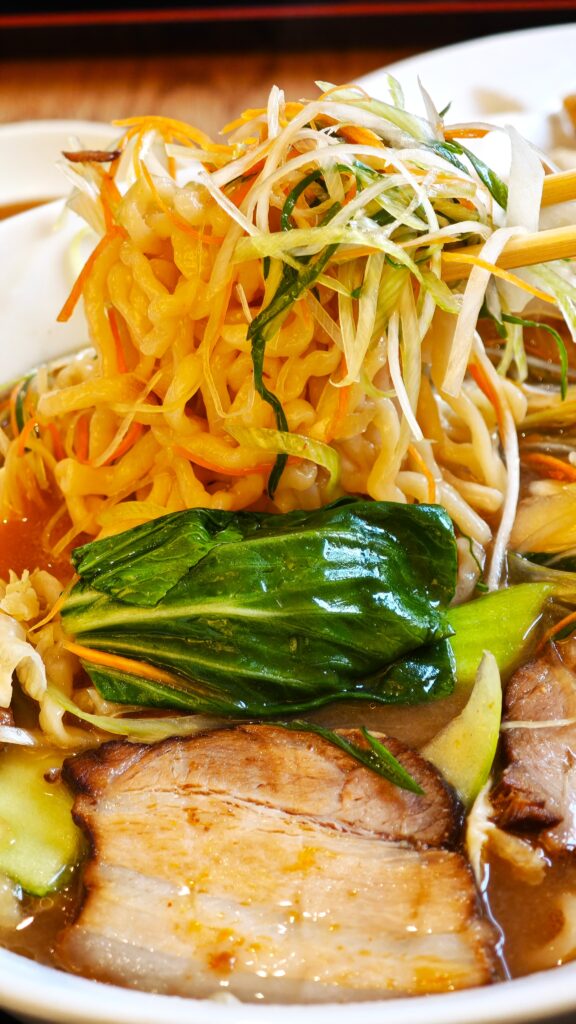
Spicy Miso Ramen – with pork broth, spicy miso paste, 5 taro chashu, Chinese cabbage, choy, leek, carrot, onion, green onion, garlic
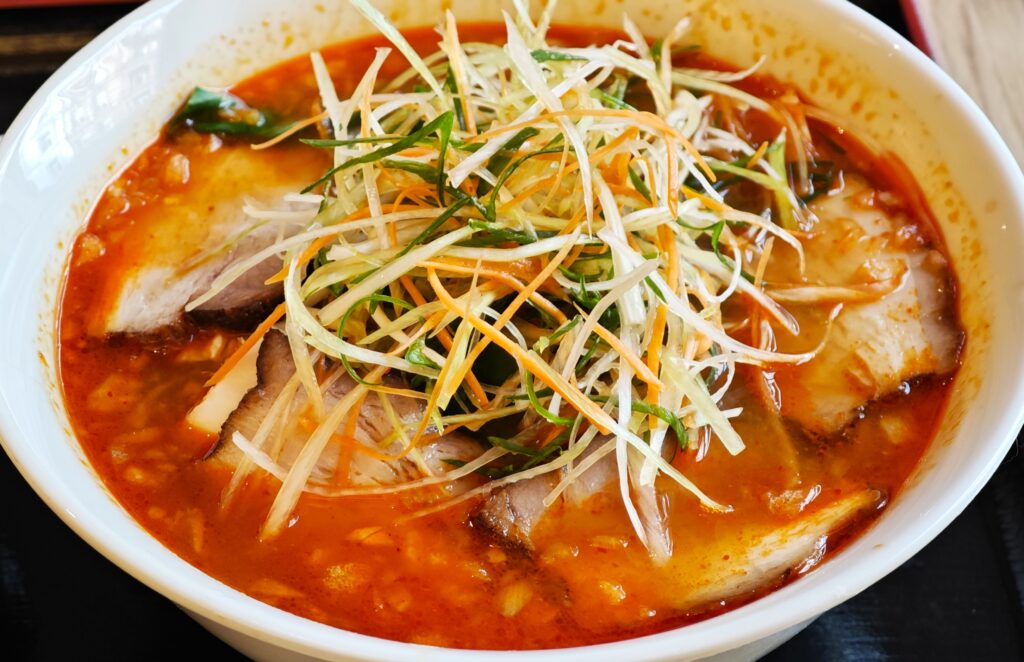
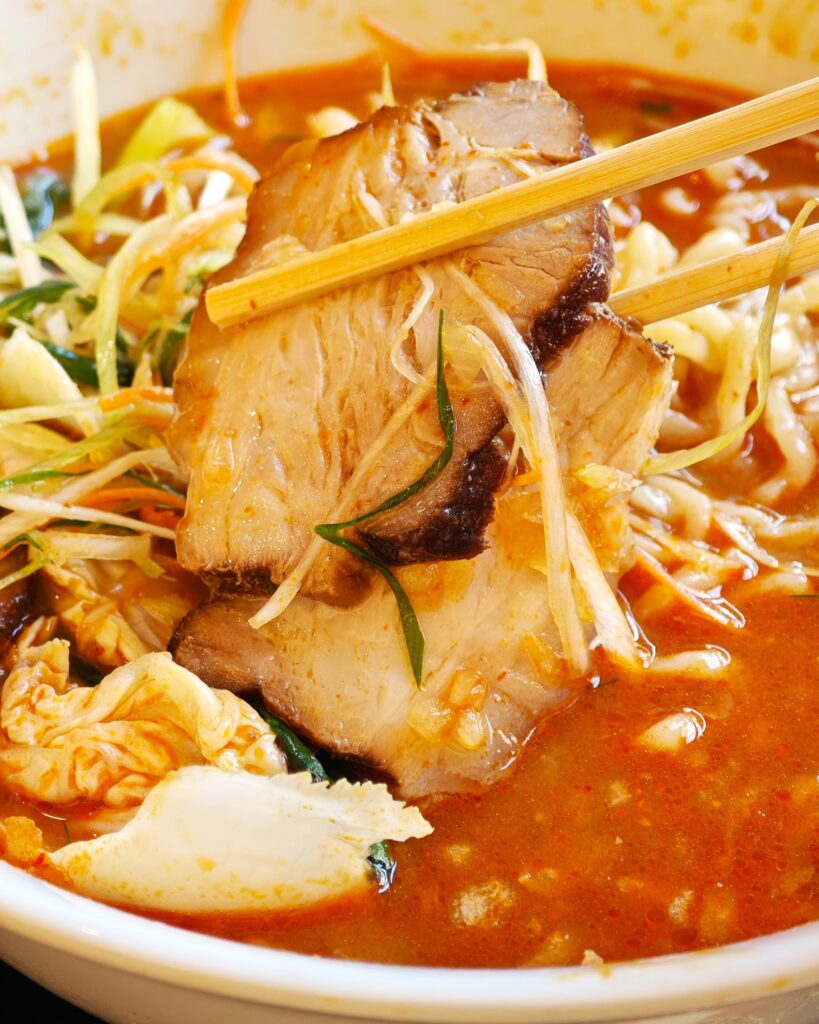
This bowl is a flavor-packed thrill ride, combining pork bone broth with fiery miso paste to create a tongue-tingling experience that keeps your lips buzz with heat.
At first sip, you’ll feel the sharp, immediate chili heat, then toasted miso umami emerges, and fades into a lingering tingle with subtle sourness (hidden kimchi notes).
The rich pork bone base grounds the spice, preventing it from overwhelming.
Springy noodles trap the spicy broth, while the crunchy veggie soften the heat. Tender toro chashu also helps cool the fire, enriching every spoonful.
Green Chili Miso Ramen – with pork broth, miso paste, 5 toro chashu, leek, Chinese cabbage, choy, garlic and green chili

Fiery green chilies meet deep umami richness. Together, they create a complex, flavorful dish that’s equal parts exciting and comforting.
Fresh green chilies deliver a bright, grassy heat. Unlike red chili’s blunt heat, these offer light herbaceous notes, with a lingering peppery finish.
The pork bone broth is deep, grounding, and soothing, while miso fermented flavor rounds out the heat.
Smoky toro chashu becomes even more tender as it soaks in the spicy broth, releasing just enough fat – rich but not greasy.
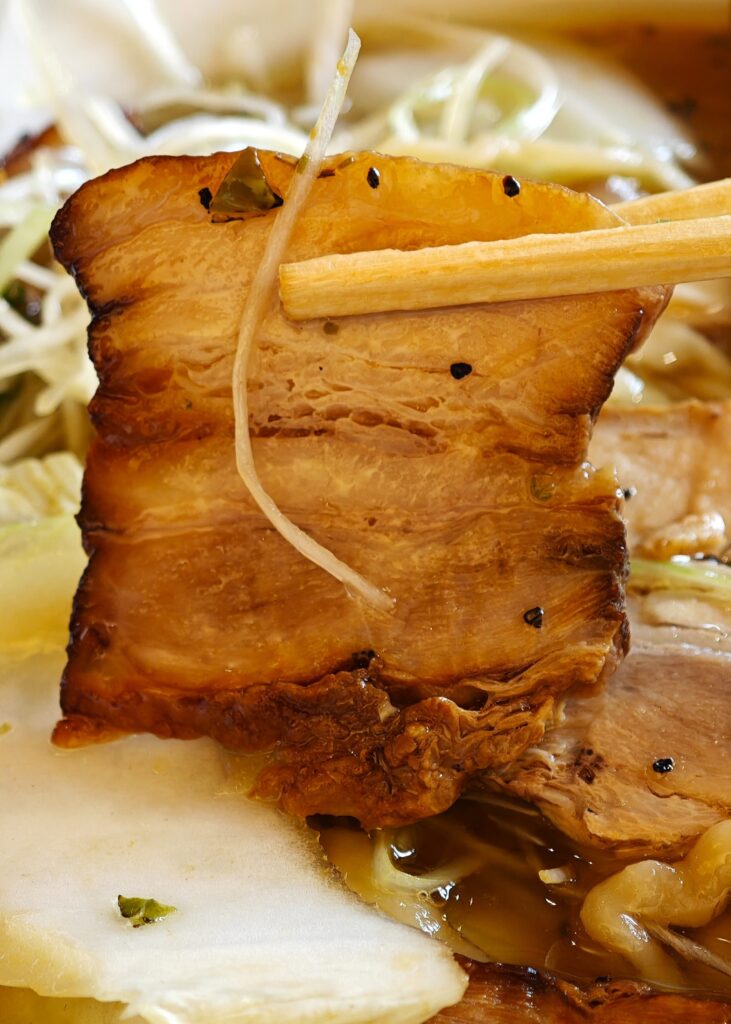
Elastic noodles give a perfect chew, roasted onions, aromatic leeks and vegetables add crunch and freshness, while pungent garlic and fresh leek cut through the richness.

The broth is thick, but not too salty, coating every ingredient with bold, comforting flavors in every slurp – easily my personal favorite at Ban Nai.
Ramen Add-Ons
At Ban Nai restaurant, you can customize your bowl with additional ingredients for just a little extra charge. Options include silky, jammy-yolked egg, earthy bamboo shoots, extra toro chashu (those tender pork slices), chili paste, chopped green onions, shredded leek etc.
Our favorite add-on deal is crispy fried tofu. The ultra-light batter is very crispy, while inside silky and creamy. It’s a soothing contrast to the rich pork bone broth.
Tip: dip rather than soak, for an ideal bite -crisp outside, custardy inside, lightly broth-kissed.
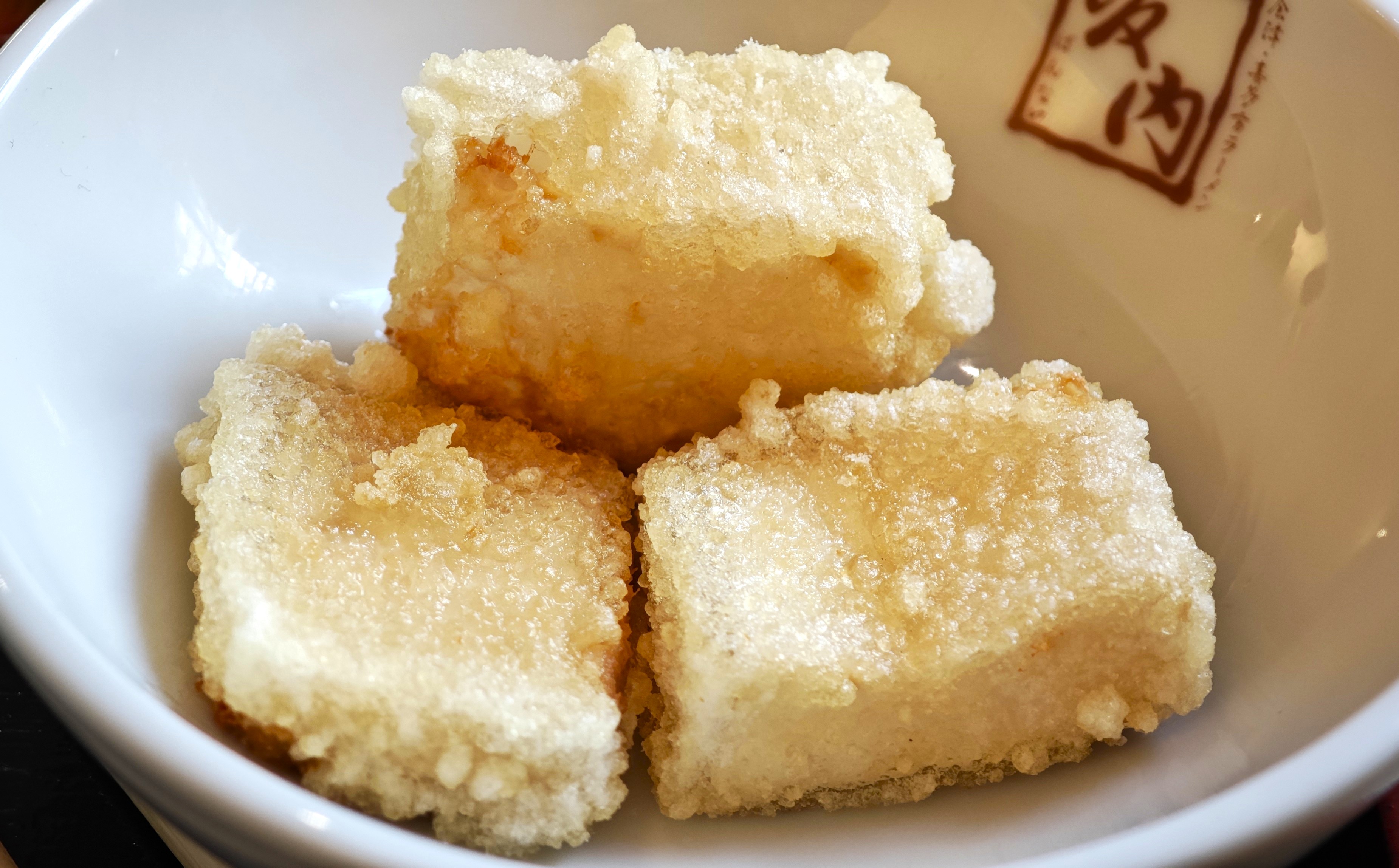
Warabi Mochi with Kinako & Kuromitsu – refreshing finale to a hearty ramen feast.
Made from warabi (bracken fern starch) for its unique bouncy texture, the warabi mochi is cool and wobbly-soft. It’s slippery-smooth yet slightly chewy – like edible silk.

Each piece is coated with nutty, toasty powder, known as kinako (roasted soybean powder). It smells like freshly ground peanuts and adds warmth to the cool mochi.
Kuromitsu (black sugar syrup) is drizzled on top for a dark caramel-like sweetness – not cloying, no sugar crash, just a hint of smoky richness.
These edible ambers have ancient roots, dating back to Japan’s Heian period (794-1185), when samurai ate it as stamina food! It’s rich in protein & fiber – so you can almost call it healthy.
Unlike overly salty ramen that leaves you parched,Ban Nai’s broth you’ll actually want to drink —especially the shoyu version, with its clean, slightly sweet depth.
Ramen portions come in medium and large sizes, with the main difference being the amount of noodles and broth. Honestly, the medium is totally enough, unless you’re really starving.
They also offer various sides – from edamame (steamed young soybeans) and gyoza (dumplings), to seared toro chashu rice, wasabi chashu rice, takoyaki (octopus-filled dough balls), salmon mayo onigiri (rice triangles), and wasabi chashu onigiri.
A heads-up:this place fills up fast. Within just 20 minutes after opening, it’s already packed, with a line forming outside – so better to arrive early or with a reservation if possible.
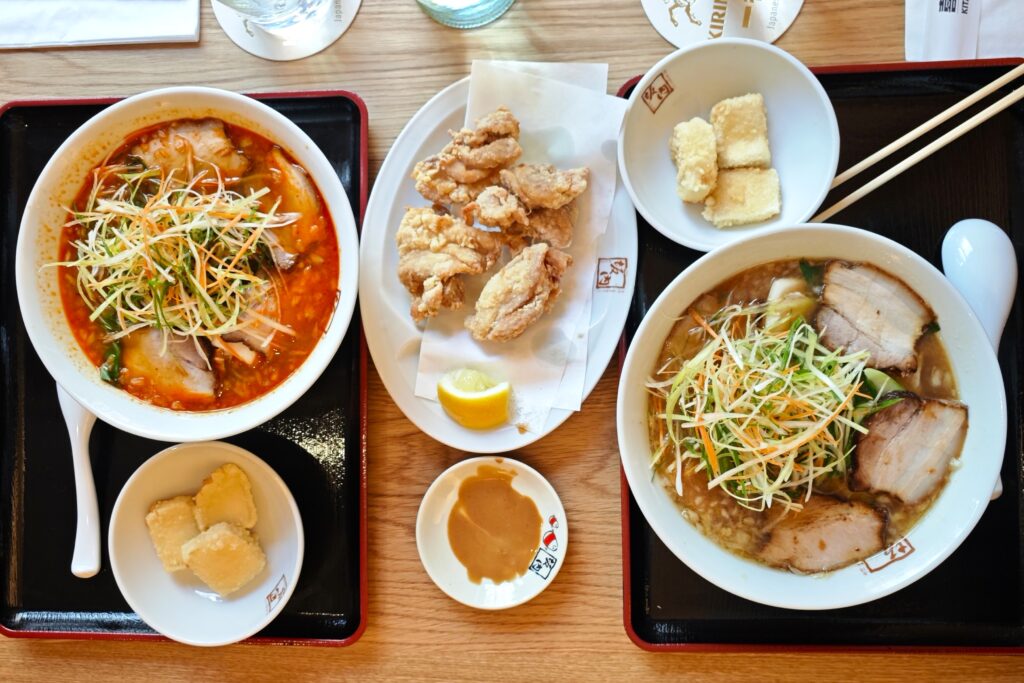
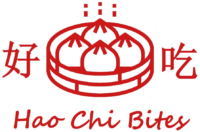
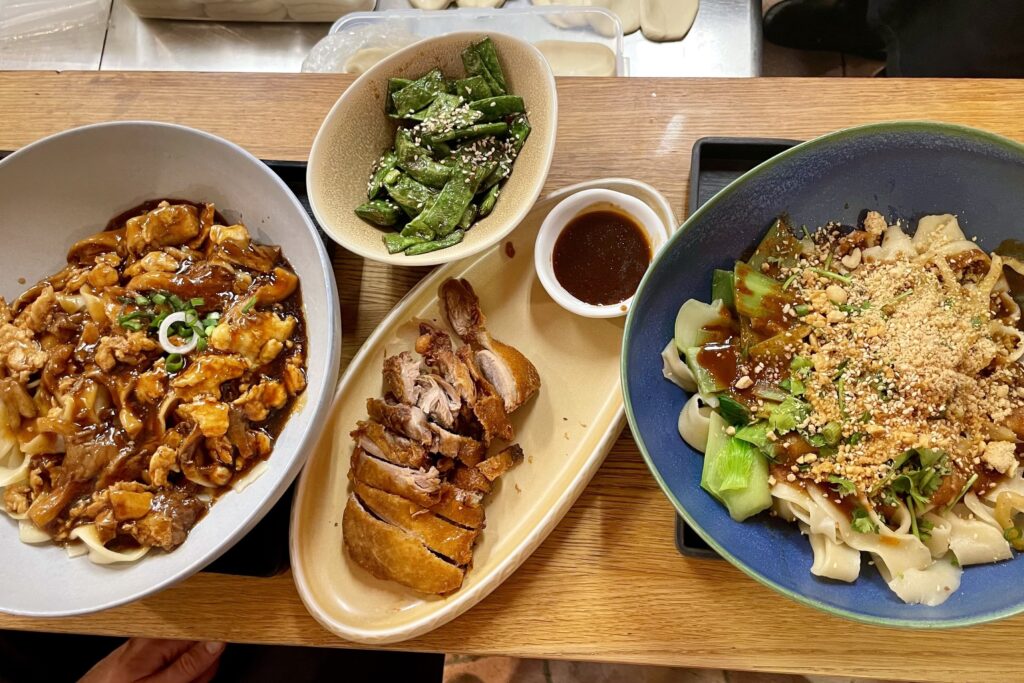

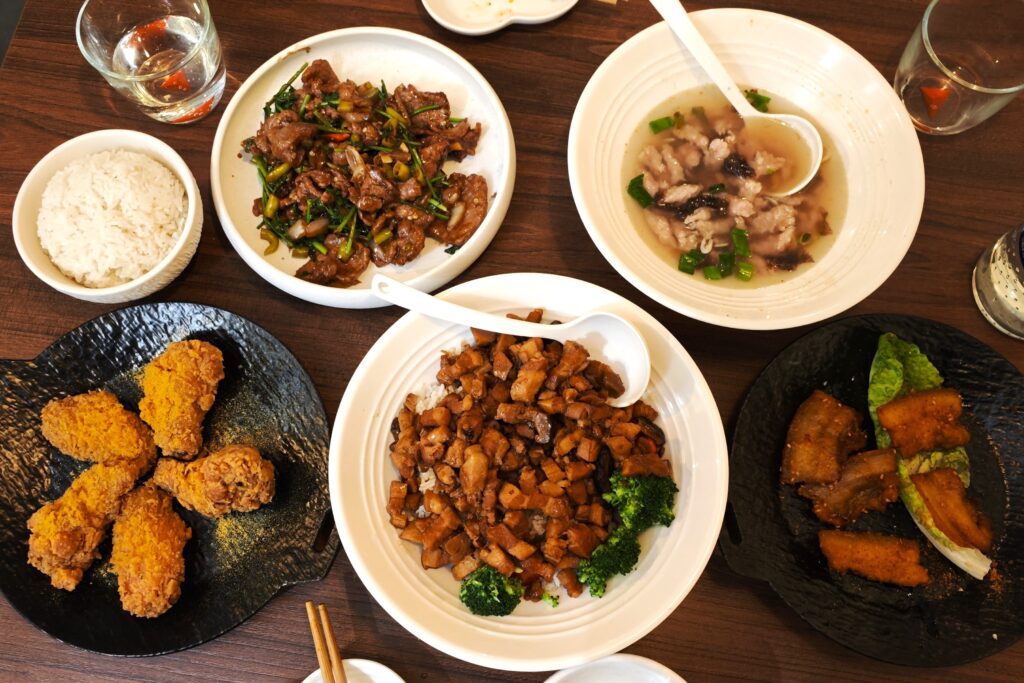
For me, there were too few vegetables and it was very meaty, which got a bit heavy. Although you can order vegetable toppings separately, the variety and portion sizes aren’t that big. I’d prefer something a bit more balanced.
Be prepared to wait in line if you visit. Frankfurt has plenty of great ramen spots, so I think there’s no need to stress over this one in particular.
I’m surprised this ramen shop has made it to Frankfurt! Out of Japan’s top three ramen brands, they’re probably the least well-known. But their broth is my favourite, lightly flavored with soy sauce, not too salty. Some other ramen places can go a bit overboard with the salt.
The chashu isn’t too fatty, but I wouldn’t recommend adding extra meat, otherwise you might feel a bit heavy by the end.
The best part, though, is the noodles. They’re super springy. Honestly, just a plain bowl of noodles is already really satisfying.
Thanks for the update! This place looks great!
Hi! Thanks for the update. The noodles look so tasty—perfect for the cool spring weather. I’ll give it a try!
Thanks for the update! This place really has its own style. The noodles are quite wide and curled, soft but not mushy, and they hold the broth well. Indeed after finishing the soup, it doesn’t leave you feeling thirsty. The first bite tasted a bit salty, but as I kept eating, it felt okay. The fatty pork belly was just so-so — it’s quite thick, and when chewing, there’s a bit of a porky, gamey aftertaste.